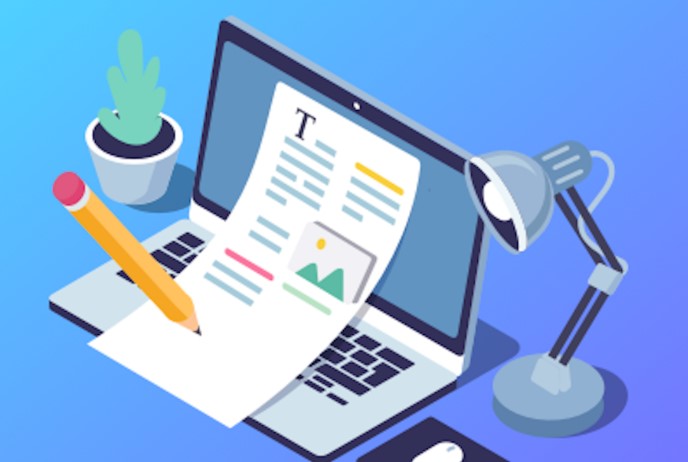SEO For Bloggers: How To Optimize Your WordPress Blog Posts For Search Engines

Search engine optimization is the process of making your blog or site better for search engines. It helps bloggers get more visitors. This is very important if you want more people to read your blog posts. Optimising WordPress blog posts can help with rankings on Google. When more people find your blog they read, share and maybe even return for more.
Optimizing your posts brings many benefits. It increases blog traffic. It makes your blog visible to more people. It also gives your blog authority. When readers trust your blog they rely on it for information. Let us now look at some steps to optimize your blog posts.
Choosing The Right Keywords
Before writing, finding the right keywords is important. Many tools are available for keyword research. You can use Google Keyword Planner Ubersuggest and SEMrush. These tools show you keywords people use when they search. The wrong keywords would lead to poor rankings.
Focus on long tail keywords. These are phrases with three or more words. They help you stand out in niche blogging. For example instead of using SEO tips try SEO tips for new bloggers in 2023. Long tail keywords bring more specific readers.
Know the intent of your keywords. Some readers want answers. Others want help choosing services or products. Pick keywords based on what your readers are searching for. Intent decides how you should write your post.
Primary and secondary keywords are also something to plan for. Your blog needs a primary keyword. Use this one in your title and first paragraph. Secondary keywords should support the content. Mix these in naturally throughout your post. Never overuse any keyword as that would not work well.
Writing SEO Optimised Blog Content
Your title is the first thing readers and search engines notice. Make it clear and short. Include your main keyword in the title. Use numbers to make it look more appealing. For example 10 Simple Ways to Boost Your SEO. Clear titles attract more clicks.
Make proper use of subheadings throughout your post. The main title uses H1. Subheadings should use H2 or H3. These make your post organized. Also include keywords in these subheadings. Subheadings also make the post easier to read.
Write for both your readers and search engines. Content should be easy to read. Keep sentences and paragraphs short. Try using simple words. Never overthink keyword placement. Write naturally.
Keywords have important spots where you must place them. Let the keyword appear in your title, your first 100 words and headings. They should also be in the meta description. But do not overuse keywords as it creates a poor impression.
Optimizing On Page Elements
The meta title and description are what people see on search engines. The meta title uses your main keyword. Keep it catchy. The meta description should describe your post briefly. Make it about 150 characters. It should also have your keyword.
Permalinks are the URLs of your posts. These should be simple and clean. A good permalink structure looks like mysite.combest SEO tips. Avoid using unnecessary numbers or random strings in the links. Keep permalinks short and related to your content.
Images can make a post look good but they can also slow down your site. Use tools like TinyPNG or ShortPixel to compress images before you upload them. Also use keywords in the alt text of images. This makes images noticeable in searches.
Include internal and external links in your posts. Internal links guide readers to another post on your blog. External links lead readers to trusted sources. Together they make your blog more helpful.
Enhancing Blog Performance For SEO
Page speed is important for keeping visitors on your blog. A slow site makes visitors leave. To improve speed use caching tools. Compressing photos and using lightweight themes is useful. Every improvement makes the site better.
Mobile optimization is necessary. Many readers reach blogs on phones. Google also ranks mobile friendly sites higher than non mobile friendly ones. Check if your site does well on phones using Google’s Mobile Friendly Test.
Your site needs an SSL certificate. This shows that your site is secure. A secure site ranks better on Google. HTTPS is now a must. It also makes readers trust your blog more.
The Role Of Plugins In WordPress SEO
WordPress plugins make SEO simpler. There are many helpful plugins you can use. Common ones are Yoast SEO Rank Math and All in One SEO Pack. These manage your meta descriptions. They also suggest improvements for your posts.
Keep your plugins updated over time. SEO rankings change because of Google’s updates. Adjust your plugins now and then to match the latest SEO trends. Plugins save time and ensure you do not forget important SEO tasks.
Tracking And Monitoring Performance
Always monitor how well your blog posts perform. Google Analytics and Search Console are very helpful. Set them up to track traffic and user activity on your blog. Analytics show how readers find and use your blog.
Tracking keyword rankings is important. You should know where your blog post stands for important keywords. Use tools like Ahrefs for this. If rankings drop, revise that blog post to improve its SEO performance.
Audit your older posts regularly. Replace broken links and refresh old content. Update keywords to match the current search trends. This will improve the ranks for those posts again. Fixing old posts gives your blog life again.
Every blogger should aim to stay consistent with optimization. By improving posts again and again you keep your blog strong. SEO is not something one does once and then forgets. It is a habit that pays off over time.




Leave a Comment